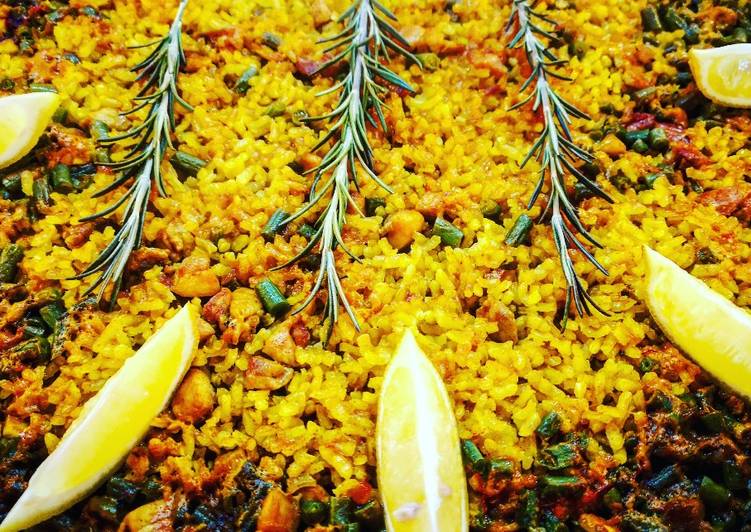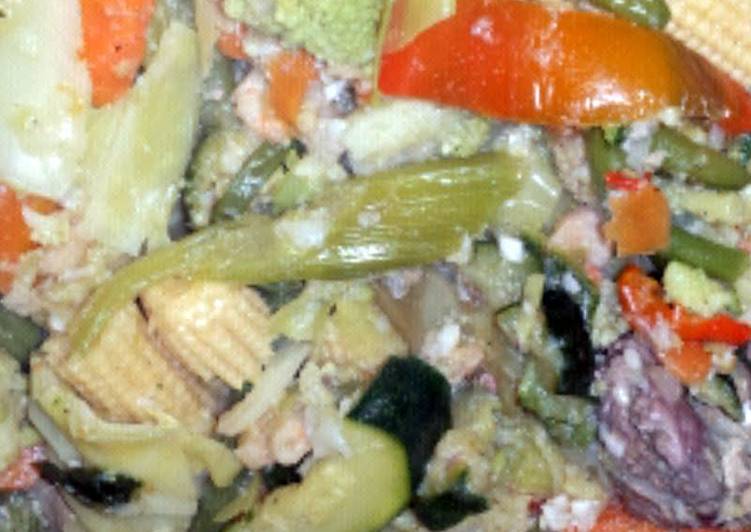
Hey everyone, I hope you’re having an incredible day today. Today, I’m gonna show you how to make a special dish, paella valenciana (tradicional valencian paella). It is one of my favorites. For mine, I’m gonna make it a bit unique. This is gonna smell and look delicious.
Paella is a Spanish rice dish originally from Valencia. Paella is one of the best-known dishes in Spanish cuisine. This one is the most traditional Valencian Paella recipe.
Paella Valenciana (Tradicional Valencian Paella) is one of the most favored of current trending foods on earth. It’s appreciated by millions every day. It is simple, it’s quick, it tastes yummy. Paella Valenciana (Tradicional Valencian Paella) is something which I have loved my whole life. They are nice and they look fantastic.
To get started with this particular recipe, we have to prepare a few components. You can cook paella valenciana (tradicional valencian paella) using 12 ingredients and 12 steps. Here is how you can achieve it.
The ingredients needed to make Paella Valenciana (Tradicional Valencian Paella):
- Take 500 g Valencian Paella Rice (Arroz Bomba)
- Prepare 2 Tbsp Olive Oil
- Take 1 L chicken stock
- Make ready 500 g chicken thighs chopped into small pieces
- Prepare 2 large ripe tomatoes grated
- Make ready 2 Cloves Garlic finley chopped
- Get Pinch Saffron
- Make ready Bunch rosemary
- Make ready 100 g Fine green beans finely cut
- Prepare 1 lemon cut into wedges
- Take 1 Tbsp paprika
- Prepare 1 Tsp smoked paprika
Amadeo Faus from his restaurant in Gandia shows us the traditional recipe of Valencian paella. Traditional Paella Valenciana is a great dish to share with family and friends! It was traditionally cooked outside on an open fire using orange or pine wood. I can imagine families & friends having a good time, all chatting away while waiting for it to be cooked.
Instructions to make Paella Valenciana (Tradicional Valencian Paella):
- On a paella dish or in a large pan, heat up the olive oil to a medium high heat. Fry the chicken until well browned and caramelised.
- Add the garlic and fry for a minute or two.
- Add the grated tomato and cook down until it becomes thick and coats all the chicken.
- Next add the green beans and fry for a few minutes untill the start to take some colour.
- At this point, you can add the rice and fry for a few minutes.
- Add the paprika's and the saffron.
- Now add the chicken stock. Taste and season well with salt. Add more salt than you think you will need as the rice will reduce reduce the saltiness of the stock.
- Add the rosemary and bring to the boil and then reduce the heat to minimum.
- From now on don't touch it. Stand by it for the next 15 to 20 minutes. Remove the rosemary and keep cooking untill the rice is cooked through and you start to smell burning coming from the center of the pan. This is normal and you want it as this is what we call sucrado. It's one of the distinguishing factors of traditional paella.
- At this point you wan to take it off the heat, lay some more rosemary on top and cover with foil.
- Rest for 15 to 20 minutes.
- Garnish with the lemon wedges and serve.
The real Paella Valenciana doesn't have green peas, but you can add, when its the season, artichoke in quarters. Someone told you to add a bit of lemon juice over it before eating the paella, and I agree it makes the flavour more intense, but the acid of the lemon. Paella is a traditional rice dish. Paella is a traditional Spanish dish from Valencia. There are three main types of paella: Valencian paella/paella valenciana: rice, green vegetables, rabbit, chicken, or How to prepare the best paella.
So that is going to wrap this up for this exceptional food paella valenciana (tradicional valencian paella) recipe. Thanks so much for your time. I’m sure you can make this at home. There’s gonna be more interesting food at home recipes coming up. Don’t forget to bookmark this page on your browser, and share it to your family, colleague and friends. Thank you for reading. Go on get cooking!


